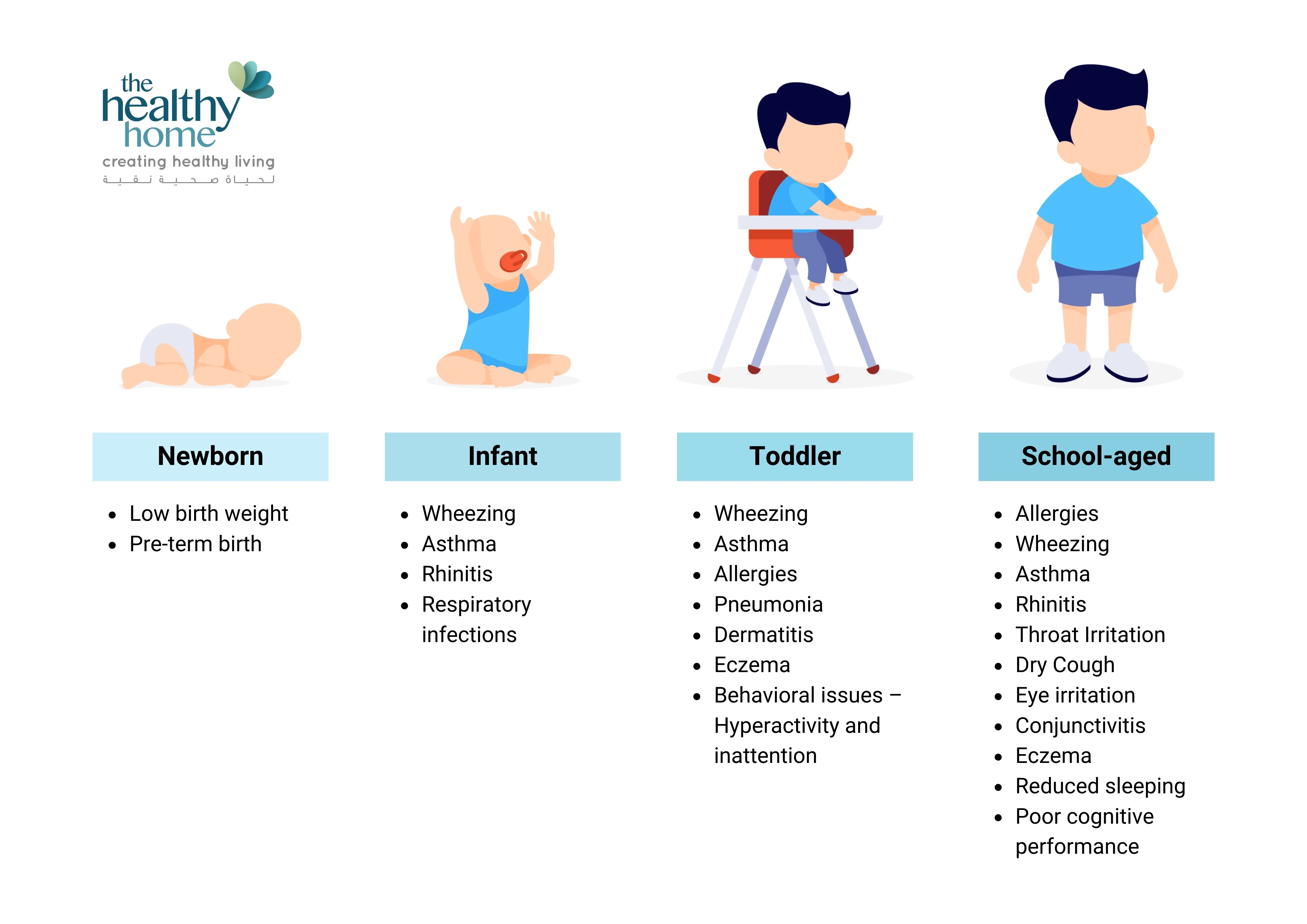When we think of air pollution, we often picture outdoor sources like factory emissions, vehicle exhaust, or smog. However, the truth is that we spend most of our time indoors, especially our children in Kuwait. They eat, play, and sleep indoors, constantly breathing the air in our houses. Did you know that indoor air pollution could be making our children sick? Indoor air pollution significantly impacts children more than adults due to their ongoing respiratory system development and their higher intake of air relative to their body weight.
Indoor air pollutants, being both invisible and odorless, are often referred to as "unknown enemies." Research indicates that although children spend time indoors both at schools and homes, homes harbor a higher concentration of indoor air pollutants. In fact, studies have found that 88% of total air pollutants are present in homes. The bedroom environment is particularly concerning, as it presents the highest exposure to and inhalation of indoor air pollution. This accounts for 56% (in the 3–12 age group) and 64% (in the 12–18 age group) of the daily inhaled pollutants.
According to the World Health Organization, in 2019, a staggering 99% of the global population resided in areas where the air quality was deemed unhealthy, posing a significant risk to children’s health and development. Children are particularly vulnerable to air pollution due to several reasons. Their rapid breathing rate means they inhale more air compared to adults, relative to their body weight. Moreover, they often spend more time closer to the ground, where certain pollutants accumulate at higher concentrations. Here are the primary health issues children face from breathing polluted indoor air in our homes:
Unfortunately, our children frequently suffer from these illnesses without realizing that the root cause could be the polluted air they breathe inside our homes. UNICEF states that almost half of all deaths in children under 5 years of age due to lower respiratory tract infections are caused by particulate matter from household air pollution.
)
The major sources of household air pollution include:
To safeguard the health and well-being of our children, it's crucial to manage sources of indoor air pollution effectively. While some measures like avoiding smoking, minimizing indoor fuel burning are within our control, and making eco-friendly choices in building materials and household products, addressing more complex issues may necessitate professional intervention.
While regular home cleaning and dusting are essential for surface cleanliness, deep cleaning by professionals targets hidden allergens and pollutants in overlooked areas. Professional cleaning of upholstery, mattresses, carpets, and curtains removes dust, allergens, and microbes, maintaining a healthier indoor environment.
When it comes to pest control in Kuwait, DIY methods may seem convenient or cost-effective but often lack effectiveness. Professional pest control services utilize expertise, tools, and eco-friendly solutions to eradicate pests thoroughly and prevent future infestations.
Regular maintenance and cleaning of air conditioners are vital to improving indoor air quality. Annual servicing ensures optimal performance and minimizes the release of accumulated bacteria and dust into the air.
It's crucial to fix any water leaks at home, remain vigilant about mold growth, and promptly seek the help of professionals to remove it completely.
Ensuring a clean and healthy home environment for our children in Kuwait involves obtaining a precise assessment of indoor air quality by periodically testing the air in your home. Understanding the primary indoor air pollutants empowers us to make informed decisions and effectively address household air pollution.
Monitoring indoor air quality through periodic testing provides an accurate assessment and empowers informed decision-making to mitigate household air pollution effectively.
By understanding and managing primary indoor air pollutants, we can create a cleaner, healthier home environment that supports the well-being of our children.